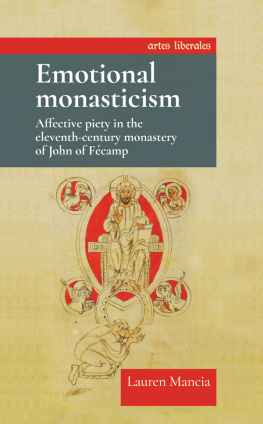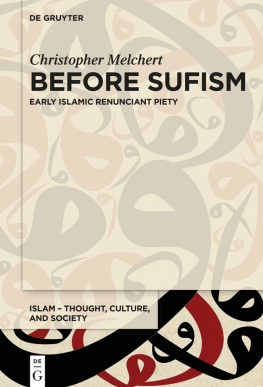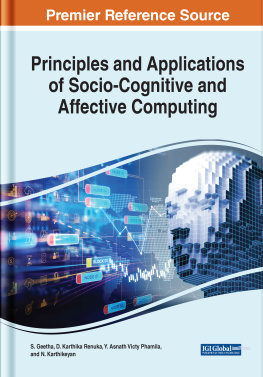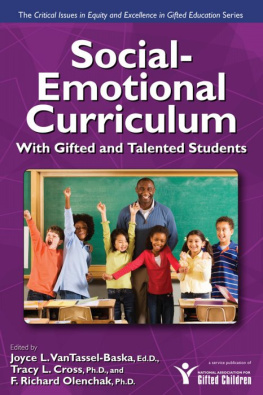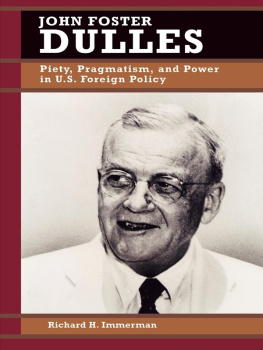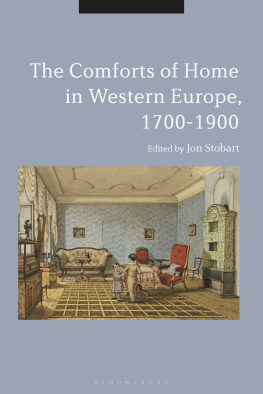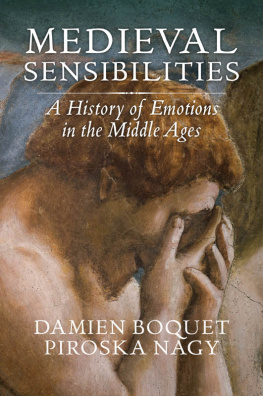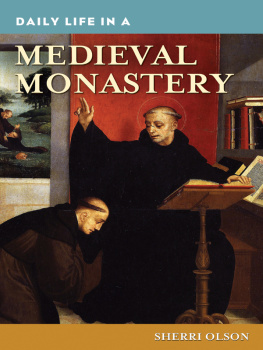Copyright Lauren Mancia 2019
The right of Lauren Mancia to be identified as the author of this work has been asserted by her in accordance with the Copyright, Designs and Patents Act 1988.
Published by Manchester University Press
Altrincham Street, Manchester M1 7JA
www.manchesteruniversitypress.co.uk
British Library Cataloguing-in-Publication Data
A catalogue record for this book is available from the British Library
ISBN 978 1 5261 4020 3 hardback
First published 2019
The publisher has no responsibility for the persistence or accuracy of URLs for any external or third-party internet websites referred to in this book, and does not guarantee that any content on such websites is, or will remain, accurate or appropriate.
Typeset by Newgen Publishing UK
I first came across John of Fcamps name in a footnote in the summer of 2009; since then, I have benefited from a tremendous amount of support for this project. Margot Fassler, Denys Turner, and Anders Winroth were there for the initial discovery, and helped me when this project was in its infancy. Susan Boynton, Fiona Griffiths, and particularly Paul Freedman provided essential advice as this project grew from adolescence into adulthood. Alongside Susan, several early mentors have rooted for me from the sidelines: I thank Carmela Franklin, Joel Kaye, Patricia Dailey, Consuelo Dutschke, Nancy Wu, Jennifer Harris, and Isabelle Cochelin for their encouragement and continued interest and investment in my scholarly growth.
I spent large parts of 2010, 2012, and 2013 performing research in Europe with the support of a Fulbright grant to France; an Etienne Gilson Dissertation Grant from the Medieval Academy of America; a John B. and Theta H. Wolf Travel Grant from the Society for French Historical Studies; an Elizabeth Ann Bogert Fund for the Study and Practice of Christian Mysticism, and travel grants from Medium Aevum, the National Organization for Italian American Women, the Yale MacMillan Center, and the PSC-CUNY Research Fund. I would like to thank the librarians and archivists at the Archives dpartementales in Rouen and Calvados, the Institut de recherche et dhistoire des textes in Paris, the Mdiathque de Metz, the Biblioteca Apostolica Vaticana, the Stiftsbibliothek Zwettl, the Staatsbibliothek in Berlin, the Burgerbibliothek in Bern, the Bibliothque universitaire de mdecine in Montpellier, the sterreichische Nationalbibliothek in Vienna, the Cathedral Library in Salisbury, the Bayerische Staatsbibliothek in Munich, the Cambridge University Library, the Fitzwilliam Museum Library, and the Walters Art Gallery in Baltimore, appeared as an article, John of Fcamp and Affective Reform in Eleventh-Century Normandy, in Anglo-Norman Studies 37 (June 2015): 16179, here reprinted by permission of Boydell & Brewer.
Over the years, my work on Fcamp has benefited from the sound advice and expertise of many interlocutors. Many thanks for the questions and comments that I received from scholarly audiences at invited lectures, seminars, conferences, and colloquia at venues ranging from New York to Kalamazoo, Montral to Ghent, Baltimore to Caen. Particular gratitude goes to Jonathan J. G. Alexander, Franois Avril, David Bates, Michal Bloche, Katrin Brockhaus, Greg Bryda, Katie Bugyis, Sarah Ifft Decker, Franois Dolbeau, Cdric Giraud, Alexis Grlois, Catherine Letouzey, Jacques Le Maho, Carolyn Marino Malone, Clare Monagle, Laurent Morelle, Karl Morrison, Michel Parisse, Peter Potter, Cassandra Potts, Diane Reilly, Greg Roberts, Edward Schoolman, Ourdia Siab, Tjamke Snijders, David Spear, Patricia Stirnemann, Lucile Tran-Duc, Steven Vanderputten, Anne Wagner, and Teresa Webber, who all pointed me towards sources, helped me work out ideas, and made necessary introductions. Marie-Thrse Gousset visited me weekly in the Salle des Manuscrits at the Richelieu site of the Bibliothque nationale in 2012 without her substantial aid, encouragement, and advice, this book would not have been possible. Marcus Elder looked over my Latin translations and provided learned tweaks and sage advice. Monique Peyrafort and especially Stphane Lecouteux spent hours and hours with me gleefully making connections between the library of Fcamp, the network of Norman monasteries, and the ideas of John our conversations have taught me what scholarly community can be. Jean-Franois Cottier, Vronique Gazeau, Fiona Griffiths, Liesbeth van Houts, Barbara Rosenwein, and especially Piroska Nagy have been beyond generous with their time, energy, enthusiasm, and support for the project and my career: I thank each of them with all my heart.
For the last six years, I have been fortunate enough to call Brooklyn College (CUNY) my home. New Faculty Release Time, several PSC-CUNY Research Fund Awards, Mini-Grants from the School of Humanities and Social Sciences, a Whiting Award for Teaching Excellence, and stipends from the Department of History have given me the time, research assistance, and subvention funds needed to complete this book manuscript. But more than these, the debts of gratitude that I owe to my colleagues at Brooklyn College is tremendous. First thanks go to my department chairs over the years, David Troyansky, Christopher Ebert, and Gunja SenGupta, whose advice, shelter, and support has been unflagging. Anne Ciarlo and Lorraine Greenfield have been supportive and resourceful beyond imagining. The collegiality of my fellow historians at Brooklyn College, and that of Brigid OKeeffe, Karen Stern, and Jocelyn Wills in particular, has nourished me on a regular basis: to them all I am deeply appreciative. An extra-special thanks goes to the incredible faculty in the Late Antique-Medieval-Early Modern (LAMEM) reading group at Brooklyn College, especially Andrew Arlig, Jennifer Ball, David Brodsky, Bilal Ibrahim, Nicola Masciandaro, Andy Meyer, and Karl Steel, whose company I am so honoured to be keeping. To my colleagues, mentors, and academic friends around (or once around) NYC, especially Susan Boynton, Peggy Brown, Bob Davis, Meredith Fluke Davis, Jay Diehl, Thomas Dodman, Julia Fawcett, Arnold Franklin, Fiona Griffiths, Sara Lipton, Sara McDougall, Christia Mercer, Sarah Novacich, Janine Peterson, Ellen Rentz, Christine Sciacca, Neslihan enocak, Andrew Romig, and Abigail Zitin: thank you so much for your time, truth, encouragement, humour, and advocacy. A Kurz Research Assistantship for my student Laurence Bond helped me to complete the research required for , and Laurences enthusiasm for things medieval reminded me why I got into all of this in the first place. Finally, the brilliance and wonder of my Brooklyn College students has brought me a joy that I never thought Id find in the halls of academia; their commitment to learning fills my soul, grants me perspective, and keeps me going daily: this book, in part, is for them.

